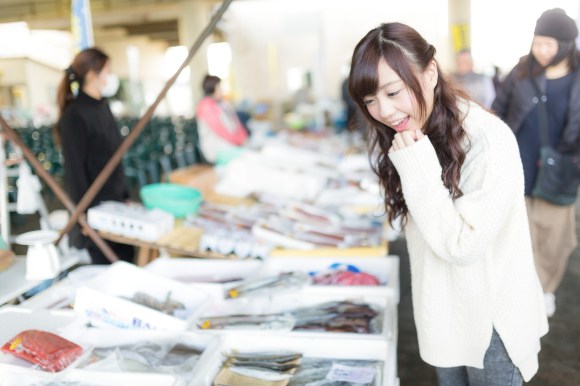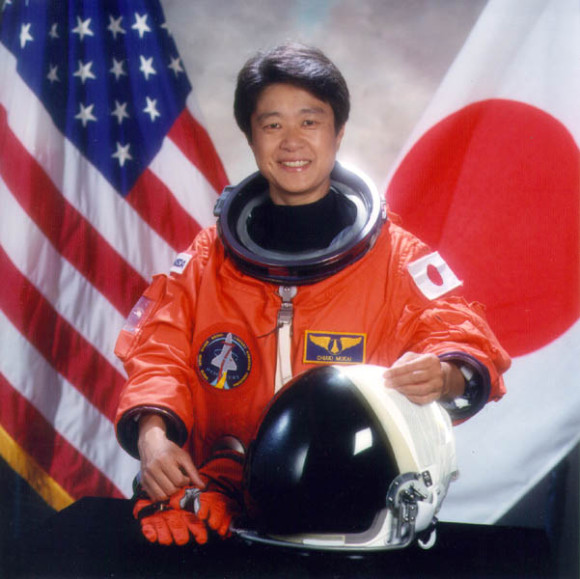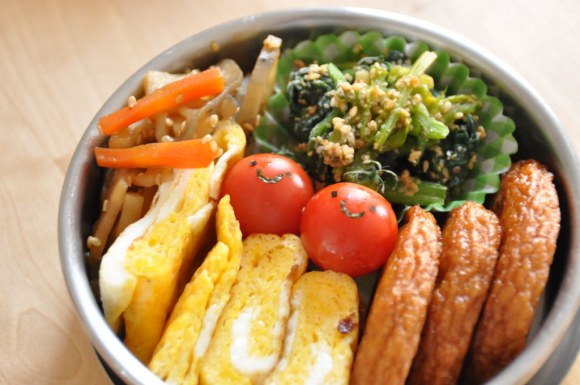
The status of women in Japan is changing and the Japanese language is being modified along with it. Let’s see how women are viewed these days by surveying some of the modern Japanese words used to describe them.
If you’ve been following our Women in Japan Series, you’ll know that we’ve been keeping our finger on the pulse of women’s status in Japanese society, documenting their highs and lows. So we were delighted when asked by Stone Bridge Press to take a look at their 30th Anniversary Edition of Kittredge Cherry’s 1980’s classic Womansword, the new edition which was officially released today.

You may have heard of Cherry’s revealing book, which was first published in 1987. It enjoyed a fair amount of readership in both the U.S. and Japan (where it was translated into Japanese as Nihongo wa onna o dō hyōgenshite kita ka). Womansword is still constantly referred to by feminists, documentarians and others concerned with women’s issues in Japan.
Language is a constantly evolving medium that reflects a society’s changing values. In this anniversary edition, the author notes some of the linguistic changes that have taken place that point to diverging stereotypes of the modern Japanese woman. Using Cherry’s book as a reference, let’s look at some of the Japanese terms that refer to women and see how they’ve changed over the past 30 years, and whether they’ve become more discriminatory, or less.
Which of these buzzwords have you heard, or not heard, before? Do you agree with them?
1. Out with the Christmas cake, in with the New Year’s Noodles 年越し蕎麦
▼ Toshikoshi Udon
Thirty years ago, women were labelled Christmas cake if they weren’t married by the age of 25. That age marker, nuanced by the 25th of December, is also the date after which a Christmas cake is considered old and stale, or past its use-by-date (and yes, they do eat Christmas cake in Japan!). While it’s refreshing that this term is no longer used, the nomenclature it has been replaced with is just as distressing: comparing a woman’s marriageable age to Japanese New Year’s noodles. These noodles, called toshikoshi soba, are eaten on December 31, the last day of the year. So the modern woman who is still unmarried at 31 has merely been given a life sentence six years later. And in addition to turning old and stale like Christmas cake, she’ll also, presumably, now become chewy.
2. Being a Dried Fish Isn’t so Bad 干物女
But there’s nothing wrong with chewy. Consider himono onna, which Cherry informs us is a label that describes some young unmarried women as “dried fish.” This means they are no longer in the market for a mate and have resigned to a more carefree and comfortable lifestyle where they–horror of all horrors–come home from work, kick off their heels, remove their make-up and don something comfy like faux fur cow pajamas or sweats before sitting down in front of the TV and slugging down a cold one! She may put on appearances when outside the house, but once she gets home, it’s all beer and TV (yay!). We can say arigato gozaimasu to the himono onna character from the manga “Hotaru no Hikari” for this one. If you’re left scratching your head and thinking, “But don’t all women throw off their fancy clothes and make-up as soon as they get home?” then perhaps you are a himono onna. With a squirt of lemon.
While the dried fish sobriquet seems a bit odd, you might be humbled to know that before raw fish was de rigueur in Japan, the gourmet food of choice was dried fish. Himono, often soaked in brine first, was sent from the coasts to the Imperial Court in Kyoto and was popular all the way up until the Edo Period (1603). Even now, only the very best himono is offered to the Sun Goddess at Ise Jingu shrine. A step above Christmas cake or New Year’s noodles, to be sure!
3. Here come the Meat-Eating Women! 肉食女子
Interestingly, no disparaging food comparisons apply to men who are not yet married at 30, although the rather sobering epithet shokudanshi or “herbivore men” describes the new milder, weaker, and less macho males of the current generation. These modern grazers could be considered incarnations of Munroe Leaf’s classic Story of Ferdinand where the young bull named Ferdinand prefers to just sit under a tree all day and smell the flowers while the tougher bulls are out showing their vigor in the bullfighting ring. Is it any wonder why Viagra has become such a hit in Japan?
▼Ferdinand the Bull
Screenshot YouTube/CartoonCrazy
So I suppose it’s not surprising that men no longer out to strut their stuff to the ladies are leaving the balance of power to the nishokujoshi, or meat-eating women–who are taking the lead and pursuing men on their own terms. These women definitely weren’t so numerous thirty years ago. So girls, will it be chicken or beef?
4. The Universe is the Limit for Rikejo–理系女子/リケ女
▼ One of the most famous Japanese women in science, Chiaki Mukai, who led the way for Japan’s current “science girls.”
Although the first women to attend university in Japan sat for the exams at Tohoku Imperial University in 1913, and Tokyo Institute of Technology’s first female science student enrolled there in 1931, traditionally, Japanese women have been discouraged from becoming scientists. After all, what man would want a smart woman who might join JAXA and leave him for the moon? Due in part to intensified recruitment by science departments at Japanese universities targeting women through science fairs and workshops, and partly due to government programs to fund scientific research by women, the stigma that the sciences are unfeminine is gradually dissipating and a growing pool of rikejo “science girls” can proudly forge careers in biology, chemistry, physics, astronomy, engineering and technology. These days, the universe is the limit and surely some day women will even jump over the moon.
5. Men appreciating food prepared by their wives: Aisai bento 愛妻弁当
Just when we thought we were getting out of the house and off to far flung locations beyond the stratosphere, married life in Japan threatens to put us back into the kitchen. With such rigorous wifely duties (including taking care of her husband’s elderly parents and performing the daunting task of parenting alone without any physical help from the husband) it’s no wonder more women aren’t jumping right into marriage let alone attempting to hold down full-time jobs at the same time. But once Japanese women do marry, they’ll have another alternative life of making bento lunches for their children to carry to school. And this is no PB&J sandwich slapped together at the last minute! The Japanese home-prepared bento is fancy, cute and nutritionally balanced, requiring many women to wake up early in the morning to cook the fresh morsels and arrange them aesthetically into the lunch box. Kids can expect treats disguised as pandas and little missives from mother that say “Do your best at school today!” hiding behind the tomatoes. Such are the pressures on Japanese mothers to parent even inside the confines of the lunch box.
▼Homemade bento rule #1: It’s gotta be cute!
And since devoted mother is already making these elaborate lunches for her children, we shouldn’t let all that talent go to waste: she may as well make one for her husband. Thus the new edition of Womensword includes aisai bento, or the bento lunch made by one’s loving wife! But aisai refers to the husband’s love for his wife, often a latent realization after years of marriage.
▼ Smiling tomatoes–that’s love for sure.
She may even lace this daintily prepared feast with hearts and chocolates. All I can say is save us all and don’t let Martha Stewart get a hold of this one!
If you’re a man, don’t tell me you’re not just a little bit jealous of the love that goes into making these. (Hmm, I wonder if she ever puts dried fish in them?). But be forewarned, if your wife isn’t happy with you that morning, she just may give you a revenge bento instead.
At any rate, the aisai bento surely leaves the old Meshi! Furo! Neru! (Food! Bath! Bed! the three things husbands are said to demand when they get home from work) in the dust. Maybe aisai furo will be next?
6. Staying active at 40 アラフォー
▼ Kimiko Date made her tennis come back “arafo.”
When a husband starts appreciating his wife’s aisai bento, she may be arafo, or around 40. Perhaps older. Arafo is used to describe active women between the ages of 35-44. Tennis player Kimiko Date was arafo when she made her comeback in tennis while in her late thirties.
Arafo doesn’t have the negative connotations that obatallion does, an epithet used to describe pushy and demanding middle aged women (think of the ladies who rush on to the train to get a seat first!). The word arafo surfaced around 2008 because of a popular TV show called Around 40 on TBS about the single lives of women of this age, perhaps to the same effect that the TV show Thirty-Something had years ago in the U.S.
7. Shining women are all the rage 輝く女性
▼ Yuriko Koike, Tokyo’s first woman governor.
One of the most popular terms being bantered about in the media these days is kagayaku josei, or shining women, which refers to Prime Minister Shinzo Abe’s economic strategy called womenomics, in which he aims to put more women in management positions and to make the Japanese workplace a place where “every woman can shine.” Cherry tells us, however, that Abe wasn’t the first one to use the word womenomics to describe a labor and economy enhanced by the addition of more women. That distinction goes to Kathy Matsui who worked for Goldman Sachs. Some women took offense to the metaphor of shining women (after all, hasn’t anyone noticed that we already shine?!) but the moniker has nonetheless proven popular.
Although Abe has been largely ineffective in securing more urgently needed daycare facilities and creating a more flexible work place for women with children, strides have been made in making more leadership positions open to women. Now, if they could just get the time off of housewifery to fill them!
On Aug. 6, 2016 Yuriko Koike became the first woman governor of Tokyo (although she has served in numerous Cabinet positions since 2003). Yeah, Koike is definitely (still) shining!
Looking at these modern Japanese words to describe womanhood, it becomes obvious that we’ve come a long way, baby! On the other hand, we still have so far to go…
For more fun and insight on Japanese words that describe women, be sure to check out Kittredge Cherry’s 30th Anniversary Edition of Womenswords.
Sources: Tokyo Institute of Technology, Japan Times, New York Times, Womansword: What Japanese Words Say About Women.
Featured image: Pakutaso









 5 powerful reasons to be a woman in Japan 【Women in Japan Series】
5 powerful reasons to be a woman in Japan 【Women in Japan Series】 Japanese business women who’ve beaten the system 【Women in Japan Series】
Japanese business women who’ve beaten the system 【Women in Japan Series】 Four more things women are banned from doing in Japan【Women in Japan Series】
Four more things women are banned from doing in Japan【Women in Japan Series】 Can you name 5 traditional Japanese arts that are distinctly female? 【Women in Japan Series】
Can you name 5 traditional Japanese arts that are distinctly female? 【Women in Japan Series】 Japanese women become wives, realize why their mothers sometimes ate ramen despite making dinner
Japanese women become wives, realize why their mothers sometimes ate ramen despite making dinner The Purple Lucky Bag from Village Vanguard is an extra-large waste of money
The Purple Lucky Bag from Village Vanguard is an extra-large waste of money Rakuten randomly offers 58 New Year’s osechi feasts in Japan, but did we get a star or a dud?
Rakuten randomly offers 58 New Year’s osechi feasts in Japan, but did we get a star or a dud? Tokyo fish market breaks New Year auction record as single fish sells for over 5 million yen【Vid】
Tokyo fish market breaks New Year auction record as single fish sells for over 5 million yen【Vid】 Private booths are coming to Japan’s Shinkansen bullet trains even sooner than we’d thought【Video】
Private booths are coming to Japan’s Shinkansen bullet trains even sooner than we’d thought【Video】 Majority of Japanese mayors say foreign residents are essential but most see good and bad effects
Majority of Japanese mayors say foreign residents are essential but most see good and bad effects Starbucks Japan ready to get Year of the Horse started with adorable drinkware and plushies【Pics】
Starbucks Japan ready to get Year of the Horse started with adorable drinkware and plushies【Pics】 7 great places to see Mt. Fuji from without having to climb it
7 great places to see Mt. Fuji from without having to climb it Here are the top ten foodie factory tours for the fall throughout Japan
Here are the top ten foodie factory tours for the fall throughout Japan How to get all-you-can eat doughnuts at Mister Donut for just 12 bucks!
How to get all-you-can eat doughnuts at Mister Donut for just 12 bucks! Should this Japanese game developer be annoyed with “similar” release by other studio?
Should this Japanese game developer be annoyed with “similar” release by other studio? Hayao Miyazaki says Happy New Year to Studio Ghibli fans with new art for Year of the Horse
Hayao Miyazaki says Happy New Year to Studio Ghibli fans with new art for Year of the Horse Japanese beef bowl chain Sukiya’s 2026 Smile Box lucky bag basically pays for itself
Japanese beef bowl chain Sukiya’s 2026 Smile Box lucky bag basically pays for itself We found possibly the quietest Japanese-style hotel in Tokyo’s bustling Shinjuku district
We found possibly the quietest Japanese-style hotel in Tokyo’s bustling Shinjuku district Cup Noodle tries an authentic Jiro-style ramen, but something’s not quite right
Cup Noodle tries an authentic Jiro-style ramen, but something’s not quite right The best Starbucks Japan Frappuccinos we want to drink again in 2026
The best Starbucks Japan Frappuccinos we want to drink again in 2026 We revisited Sweets Paradise after a decade to see if Japan’s dessert buffet still delivers
We revisited Sweets Paradise after a decade to see if Japan’s dessert buffet still delivers That time Seiji called JASRAC to ask why he didn’t get paid royalties for his song being on TV
That time Seiji called JASRAC to ask why he didn’t get paid royalties for his song being on TV Japan’s oldest largetooth sawfish in captivity back on display in Mie Prefecture
Japan’s oldest largetooth sawfish in captivity back on display in Mie Prefecture Pizza Hut Japan’s hot lucky bags are perfect for a New Year’s pizza party
Pizza Hut Japan’s hot lucky bags are perfect for a New Year’s pizza party 7-Eleven Japan starts new temporary luggage storage service in over 300 branches
7-Eleven Japan starts new temporary luggage storage service in over 300 branches Disillusionment at Tsukiji’s tourist-target prices led us to a great ramen restaurant in Tokyo
Disillusionment at Tsukiji’s tourist-target prices led us to a great ramen restaurant in Tokyo Starbucks teams up with 166-year-old Kyoto doll maker for Year of the Horse decorations【Photos】
Starbucks teams up with 166-year-old Kyoto doll maker for Year of the Horse decorations【Photos】 Tokyo considering law requiring more trash cans following litter increase in heavily touristed area
Tokyo considering law requiring more trash cans following litter increase in heavily touristed area Tokyo’s Tsukiji sushi neighborhood asks tour groups to stay away for the rest of the month
Tokyo’s Tsukiji sushi neighborhood asks tour groups to stay away for the rest of the month Tokyo event lets you travel back in time, for free, to celebrate 100 years since Showa era start
Tokyo event lets you travel back in time, for free, to celebrate 100 years since Showa era start Japan may add Japanese language proficiency, lifestyle classes to permanent foreign resident requirements
Japan may add Japanese language proficiency, lifestyle classes to permanent foreign resident requirements Sanrio theme park in Japan announces plans to expand into a Sanrio resort
Sanrio theme park in Japan announces plans to expand into a Sanrio resort Stamina-destroying “Paralysis Noodles” are Tokyo’s newest over-the-top ramen innovation
Stamina-destroying “Paralysis Noodles” are Tokyo’s newest over-the-top ramen innovation Survey asks foreign tourists what bothered them in Japan, more than half gave same answer
Survey asks foreign tourists what bothered them in Japan, more than half gave same answer Japan’s human washing machines will go on sale to general public, demos to be held in Tokyo
Japan’s human washing machines will go on sale to general public, demos to be held in Tokyo Japan’s deadliest food claims more victims, but why do people keep eating it for New Year’s?
Japan’s deadliest food claims more victims, but why do people keep eating it for New Year’s? We deeply regret going into this tunnel on our walk in the mountains of Japan
We deeply regret going into this tunnel on our walk in the mountains of Japan Studio Ghibli releases Kodama forest spirits from Princess Mononoke to light up your home
Studio Ghibli releases Kodama forest spirits from Princess Mononoke to light up your home Major Japanese hotel chain says reservations via overseas booking sites may not be valid
Major Japanese hotel chain says reservations via overseas booking sites may not be valid Put sesame oil in your coffee? Japanese maker says it’s the best way to start your day【Taste test】
Put sesame oil in your coffee? Japanese maker says it’s the best way to start your day【Taste test】 No more using real katana for tourism activities, Japan’s National Police Agency says
No more using real katana for tourism activities, Japan’s National Police Agency says Starbucks Japan reveals new sakura drinkware collection, inspired by evening cherry blossoms
Starbucks Japan reveals new sakura drinkware collection, inspired by evening cherry blossoms Updated cherry blossom forecast shows extra-long sakura season for Japan this year
Updated cherry blossom forecast shows extra-long sakura season for Japan this year
Leave a Reply